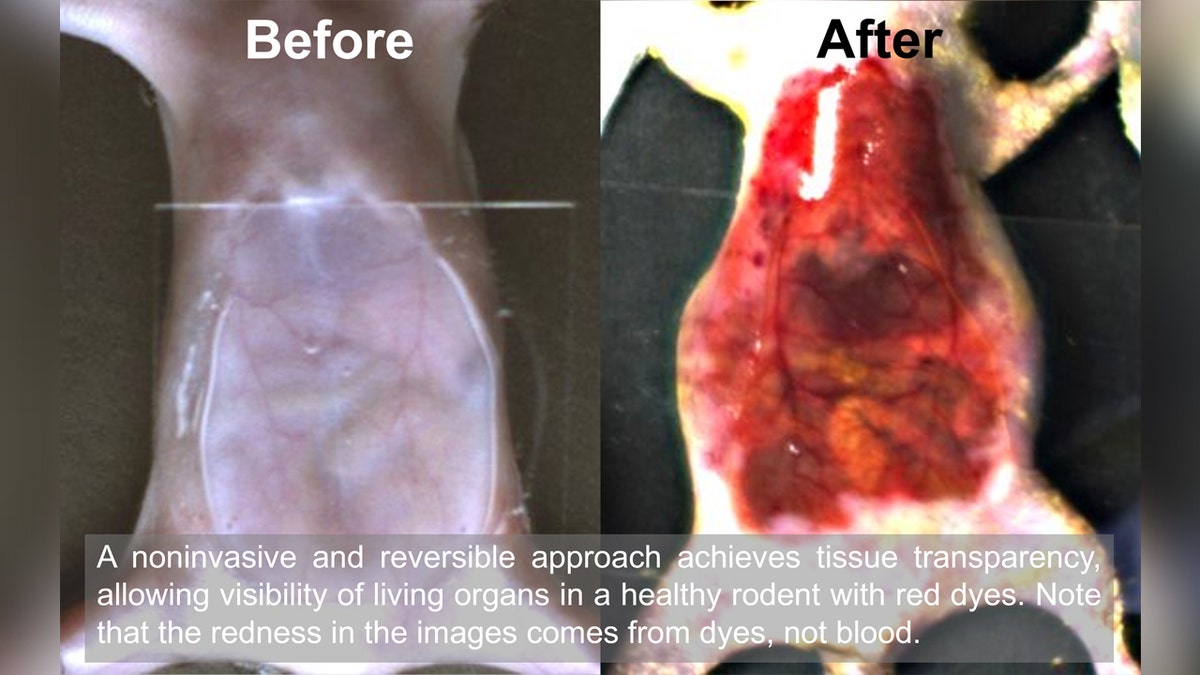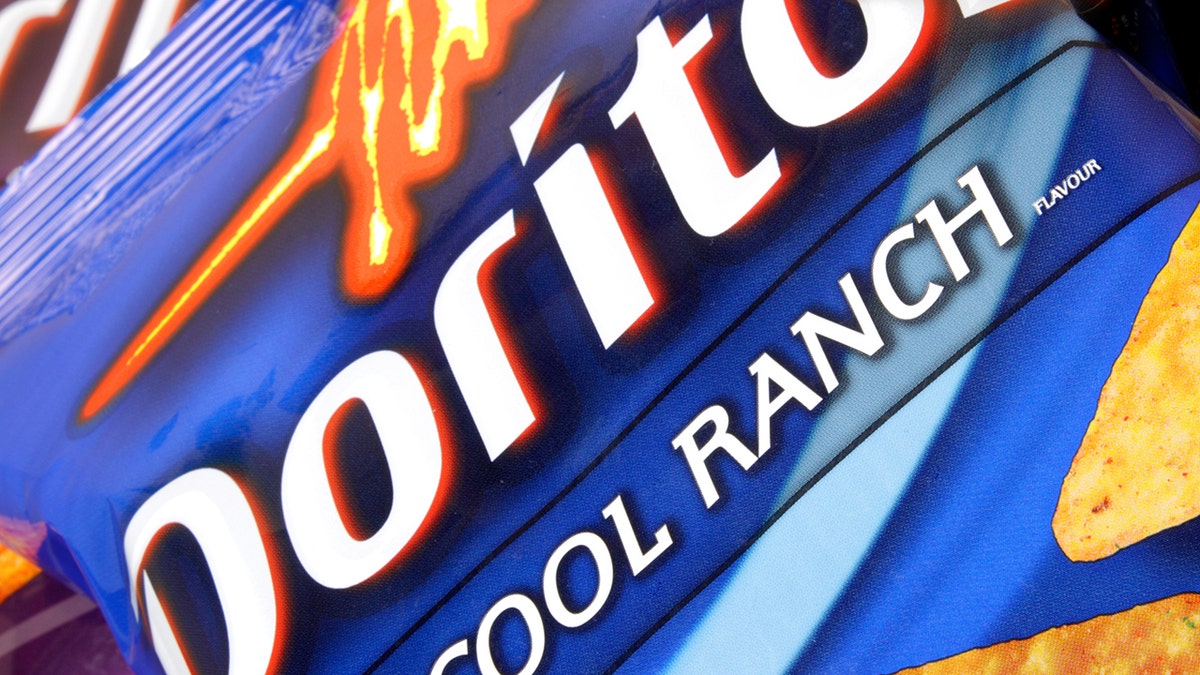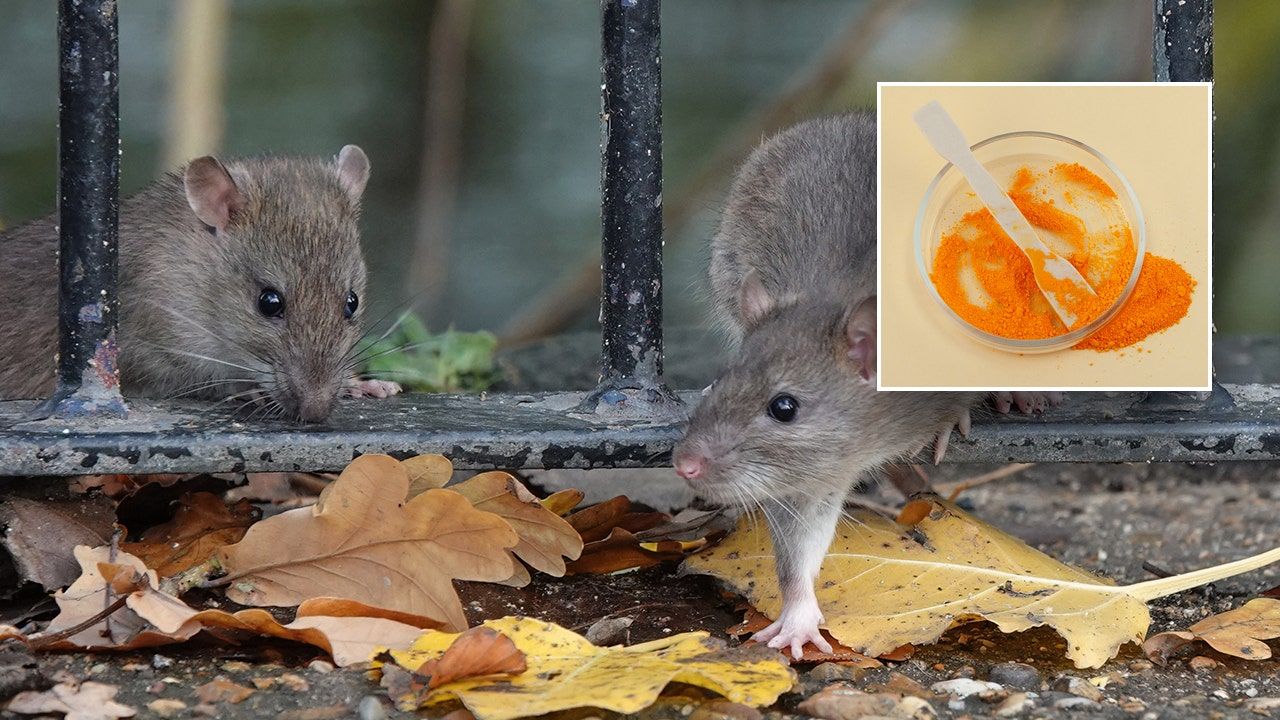Scientists at Stanford University recently managed to make mouse skin transparent using common food coloring, something the study's author told Fox News Digital could have interesting benefits for humans once further research is done.
The paper, titled “Achieving Optical Transparency in Living Animals with Absorbing Molecules,” was published in the journal Science on Sept. 5.
In it, researchers used a solution of tartrazine red, a food dye known as FD&C Yellow 5, on the abdomen, scalp and hind limbs of a sedated mouse, according to a statement from Stanford University.
CALIFORNIA PROPOSES BILL TO BAN SOME FOOD PRODUCTS AS NUTRITIONISTS WORRY ABOUT 'GROSS' INGREDIENTS
The dye turned the mouse's skin red, which then made the skin appear transparent, and the mouse's organs were visible to the naked eye, the statement said.
“The researchers believe this is the first noninvasive approach to achieving visibility into the living internal organs of a mouse,” the statement said.
A solution containing tartrazine, also known as Yellow 5, made the skin of mice transparent. (iStock)
The effects were not permanent, Stanford said: The mouse's skin returned to normal once the dye was washed away.
The results of the study surprised even the researchers.
“The most surprising thing about this study is that we normally expect dye molecules to make things less transparent. For example, if you mix blue ballpoint pen ink into water, the more ink you add, the less light can pass through the water,” Dr. Guosong Hong, an assistant professor of materials science and engineering at Stanford and senior author on the paper, told Fox News Digital in an email.
CONSUMPTION OF ULTRA-PROCESSED FOODS IS ASSOCIATED WITH A HIGHER RISK OF DEATH FROM OVARIAN AND BREAST CANCER: NEW STUDY
However, when tartrazine was dissolved in skin or muscle (normally opaque materials), “the material became clearer, but only in the red part of the light spectrum,” he said.
“This goes against what we normally expect with dyes,” Hong added.

This image, provided by Stanford University, shows how the mouse became transparent after a noninvasive solution consisting of a common food coloring was applied to its abdomen. (Stanford University)
While this study has only been conducted on animals, the ability to make skin temporarily transparent “could offer a variety of benefits in biology, diagnostics and even cosmetics,” Hong told Fox News Digital.
He went on to say that “for example, instead of relying on invasive biopsies, doctors could diagnose deep tumors simply by examining a person's tissue without the need for invasive surgical removal.”
CLICK HERE TO SUBSCRIBE TO OUR LIFESTYLE NEWSLETTER
“This technique could make blood draws less painful by helping phlebotomists easily locate veins under the skin. It could also improve procedures such as laser tattoo removal by allowing more precise localization of the pigment under the skin,” he said.
FD&C Yellow 5 is found in many foods, including soft drinks, candy, chips and pastries, including Doritos, the product's website states.

Although Doritos – and many other foods – contain Yellow 5, it will not make a person's skin clear, Hong told Fox News Digital. (iStock)
However, a person should not rub dyes on just yet, Hong said.
“We strongly advise against attempting to do this on human skin as the toxicology of the dye molecules in humans, particularly when applied topically, has not been fully evaluated,” he said.
CLICK HERE TO GET THE FOX NEWS APP
Human skin, Hong said, is “significantly thicker than mouse skin,” and the outer layer of the epidermis is a “substantial barrier that prevents effective delivery of molecules to the dermis.”
But this could soon become a reality.
For more lifestyle articles, visit www.foxnews.com/lifestyle
“A safe method for percutaneous administration of light-absorbing molecules, after a thorough evaluation of their potential effects on human skin, may lead to their clinical application in the future,” he said.












